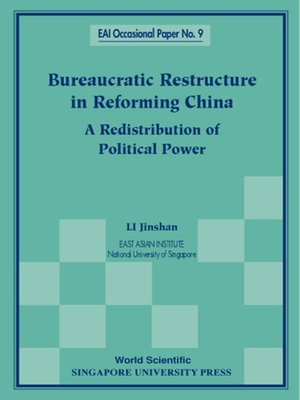Bureaucratic Restructure In Reforming China
ebook ∣ A Redistribution Of Political Power · East Asian Institute Contemporary China Series
By Jinshan Li

Sign up to save your library
With an OverDrive account, you can save your favorite libraries for at-a-glance information about availability. Find out more about OverDrive accounts.
Find this title in Libby, the library reading app by OverDrive.



Search for a digital library with this title
Title found at these libraries:
| Library Name | Distance |
|---|---|
| Loading... |
Since the introduction of the Dengist reform in the late 1970s, the state bureaucracy in China has experienced four major restructurings, each of which entailed the redistribution of political power. According to the purpose and scale of reorganization, the restructuring of the State Council can be divided into two stages. At the first stage, covering the period 1982 to 1997, Deng Xiaoping and his Executives, Zhao Ziyang and Li Peng, restructured part of the government administration in order to integrate market forces into the central-planning system. The integration was not smooth because of the struggles between reformers and conservatives, so the restructuring met with a backlash. After the Ninth National People's Congress in March 1998, the restructuring has entered its second stage, characterized by a radical retrenchment of government organizations and employees both at the central and local levels. In carrying this out, Zhu Rongji intends to relinquish government links with enterprises, thus pushing the “socialist market economy” further ahead.







